The Québec maritime Blog

-
Île aux Lièvres (Hare Island), Bas-Saint-Laurent
Catrine Daoust/Parks Canada
Belugas on the Horizon
Did you know that belugas lives right in the heart of the St. Lawrence Estuary? This isolated and fragile population was the driving force behind a grassroots movement to protect the marine ecosystems of the St. Lawrence and the Saguenay Fjord, which eventually led to the creation of Québec’s first marine protected area in 1998: the Saguenay–St. Lawrence Marine Park.
The Saguenay–St. Lawrence Marine Park is located at the gateway to Eastern Québec. Bordering the regions of Bas-Saint-Laurent, Charlevoix, Saguenay–Lac-Saint-Jean and Côte-Nord, the park is home to over 2200 plant and animal species. Whales, seals and birds travel thousands of kilometres every year to feed here. This marine protected area also provides critical habitat for the St. Lawrence belugas.
Beluga population in the St. Lawrence Estuary
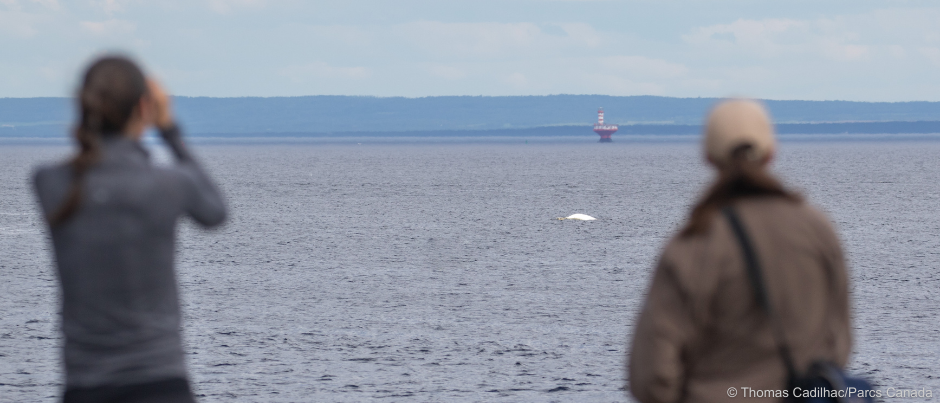
Usually found in the cold waters of northern Canada as well as in those of Russia and Alaska, the belugas found in the St. Lawrence are a distinct population. Not only are they the southernmost population in the world, they’re also the one that lives in closest proximity to human activities. Since the 1970s, belugas have been of particular interest to scientists, who have been studying their behaviour and movements, among other things. Today, the St. Lawrence belugas, estimated at 1850 individuals, are considered endangered.
Beluga watching: A land-based experience
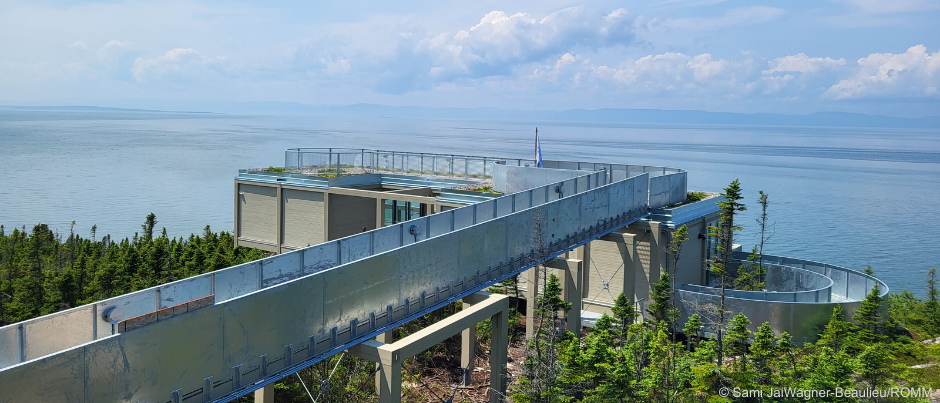
Belugas are an integral part of the landscape of the Saguenay–St. Lawrence Marine Park. They can be seen by the dozens or even hundreds. Their white backs can be sighted for a few seconds on the surface of the water, and you can sometimes catch glimpses of a head or tail.
Observing belugas in their natural habitat is an incredible privilege! However, these whales need space and a peaceful environment. The marine park has therefore implemented several measures to ensure humans and belugas can comfortably share the waters of the park, such as reducing disturbances and underwater noise. At sea, you must avoid approaching these whales, which means that beluga observation is a land-based activity. Several sites offer breathtaking views of the marine environment as you keep an eye out for belugas. Here are some of the ones found in the maritime regions of Québec:
- From Rivière-du-Loup, in Bas-Saint-Laurent, go on a sea excursion to the islands in the St. Lawrence during which you’ll find yourself at the heart of the belugas’ critical summer habitat. Société Duvetnor offers you a discovery experience focused on the seabirds found in this area. With a bit of luck, you’ll also spot seals and belugas!
- In Cacouna, the brand-new Putep ’t-awt land-based marine mammal observation site gives visitors the opportunity to admire belugas from the shore. This site was built on the edge of a mountain and offers a breathtaking view of the middle estuary of the St. Lawrence as well as of the mountains in Charlevoix, across the water. It also provides a glimpse into the culture of the Wolastoqiyik Wahsipekuk First Nation and gives you the opportunity to learn more about beluga observation and research.
- Located on the north side of the St. Lawrence, the Côte-Nord region is a renowned whale-watching destination. In the municipality of Les Escoumins, a visit to the Marine Environment Discovery Centre, administered by Parks Canada, will plunge you into the fascinating marine world of the St. Lawrence. A large patio area offers incredible views of the sea as well as opportunities to see several species of whales.
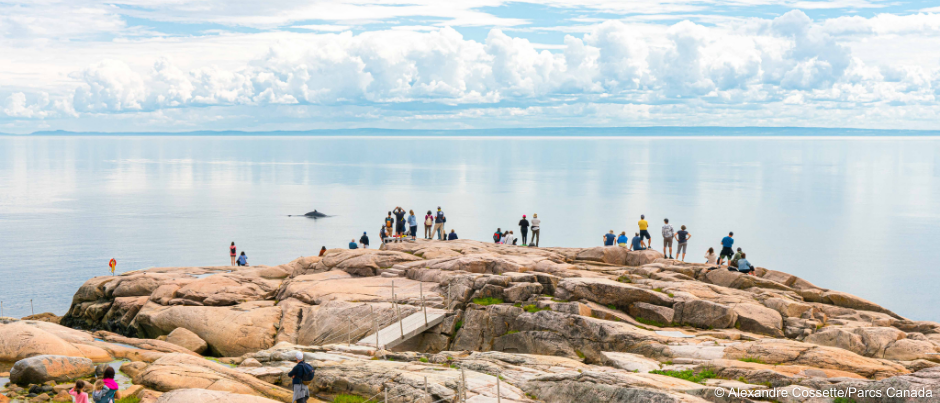
- A few kilometres further west, in Les Bergeronnes, you’ll find a second site administered by Parks Canada: the Cap-de-Bon-Désir Interpretation and Observation Centre. An old lighthouse station with outbuildings still stand guard at the entrance to this site. A five-minute walk will take you to a rocky area along the water, where the seabed is very deep and marine mammals come to feed. It’s a great place to enjoy a picnic as you scan the horizon for the white back of a beluga or the tail of a humpback whale.
- In the Tadoussac area, near the wharf and marina, a trail leads to Pointe de l’Islet. Easily accessible, this site overlooks the confluence of the majestic Saguenay Fjord and the immense St. Lawrence Estuary. In the summer, beluga whales regularly swim by on their way to the fjord. This is also a great spot to admire fabulous sunsets!

- Finally, you can continue to discover belugas in Sacré-Coeur, more specifically in the Baie-Sainte-Marguerite sector of Parc national du Fjord-du-Saguenay, a park managed by Sépaq. An area of exceptional natural beauty, Sainte-Marguerite Bay also plays a vital role for belugas, which gather here to socialize, care for their young and rest. At the lookout, visitors can rub shoulders with researchers, who record the whales’ behaviour as part of a scientific monitoring program.
Promoting discovery and educational activities is an integral part of the mission of the Saguenay–St. Lawrence Marine Park. At all the sites mentioned in this post, with the exception of the Pointe de l’Islet sector, you’ll find naturalist guides on hand to help you with your observations!
Prolonging your marine park experience
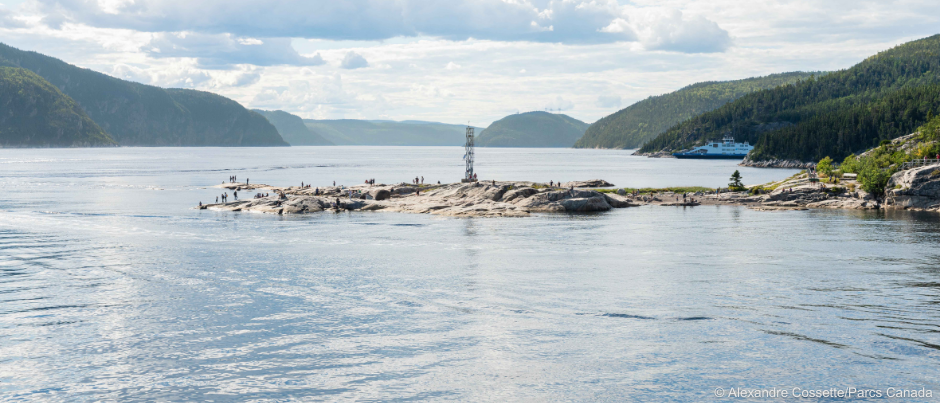
The observation sites mentioned above are part of a discovery network surrounding the marine protected area in the regions of Bas-Saint-Laurent, Charlevoix, Saguenay–Lac-Saint-Jean and Côte-Nord. There’s something for everyone at these sites: opportunities to observe marine wildlife, hiking trails, museums, historic sites, breathtaking scenery and more!
To complete your visit to the marine park, you can also go on excursions on the protected waters of the park in the company of certified captains and kayaking guides who are very familiar with this area. They’ll take you to discover other elements of the landscape such as underwater cliffs and islands, as well as share the history of nearby lighthouses and much more.
Plan your next visit to the Saguenay–St. Lawrence Marine Park today! Winds, tides and currents are sure to guide you to fascinating discoveries.
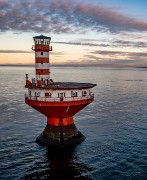
(0) comment